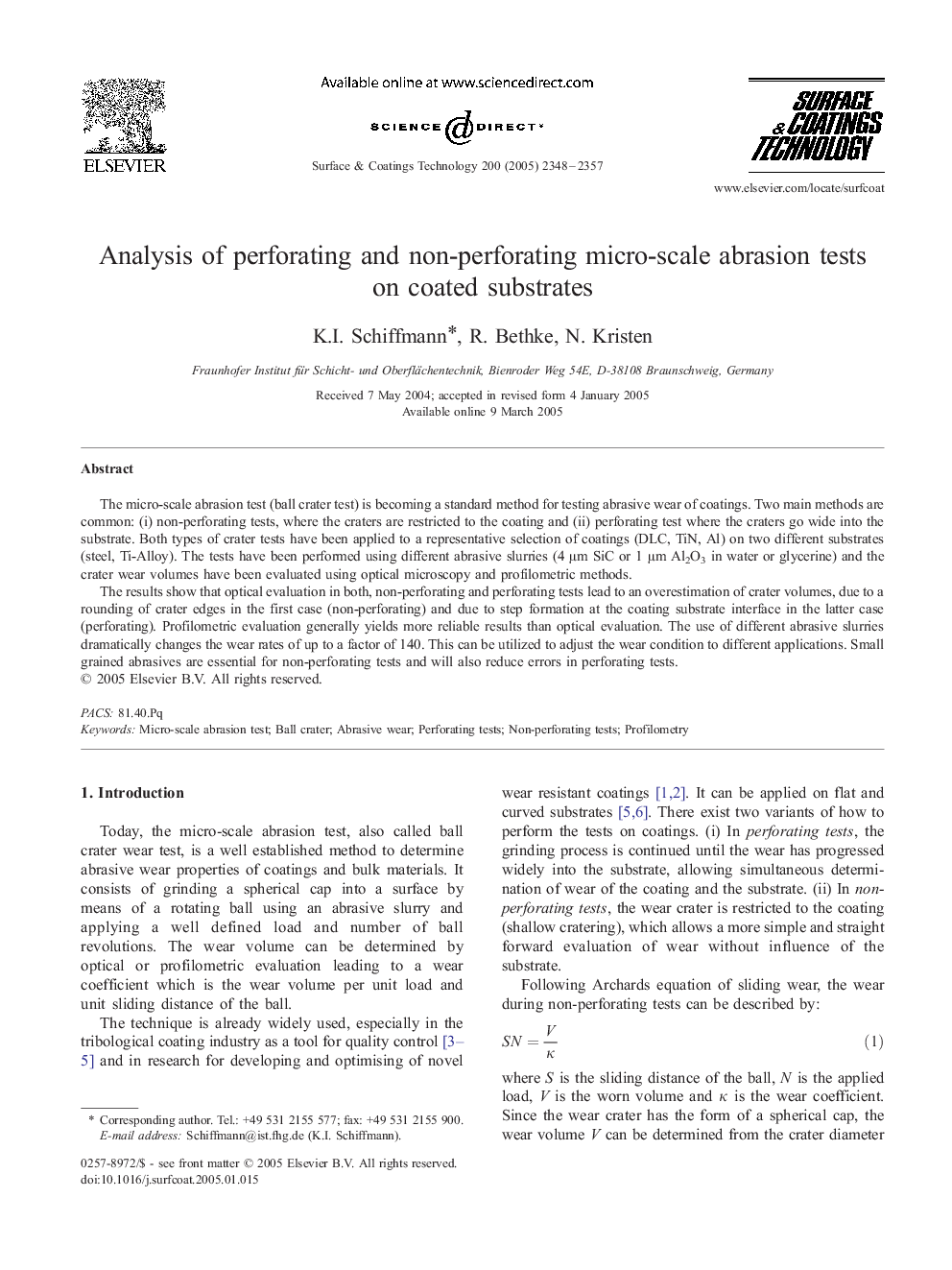| Article ID | Journal | Published Year | Pages | File Type |
|---|---|---|---|---|
| 1663450 | Surface and Coatings Technology | 2005 | 10 Pages |
The micro-scale abrasion test (ball crater test) is becoming a standard method for testing abrasive wear of coatings. Two main methods are common: (i) non-perforating tests, where the craters are restricted to the coating and (ii) perforating test where the craters go wide into the substrate. Both types of crater tests have been applied to a representative selection of coatings (DLC, TiN, Al) on two different substrates (steel, Ti-Alloy). The tests have been performed using different abrasive slurries (4 μm SiC or 1 μm Al2O3 in water or glycerine) and the crater wear volumes have been evaluated using optical microscopy and profilometric methods.The results show that optical evaluation in both, non-perforating and perforating tests lead to an overestimation of crater volumes, due to a rounding of crater edges in the first case (non-perforating) and due to step formation at the coating substrate interface in the latter case (perforating). Profilometric evaluation generally yields more reliable results than optical evaluation. The use of different abrasive slurries dramatically changes the wear rates of up to a factor of 140. This can be utilized to adjust the wear condition to different applications. Small grained abrasives are essential for non-perforating tests and will also reduce errors in perforating tests.
